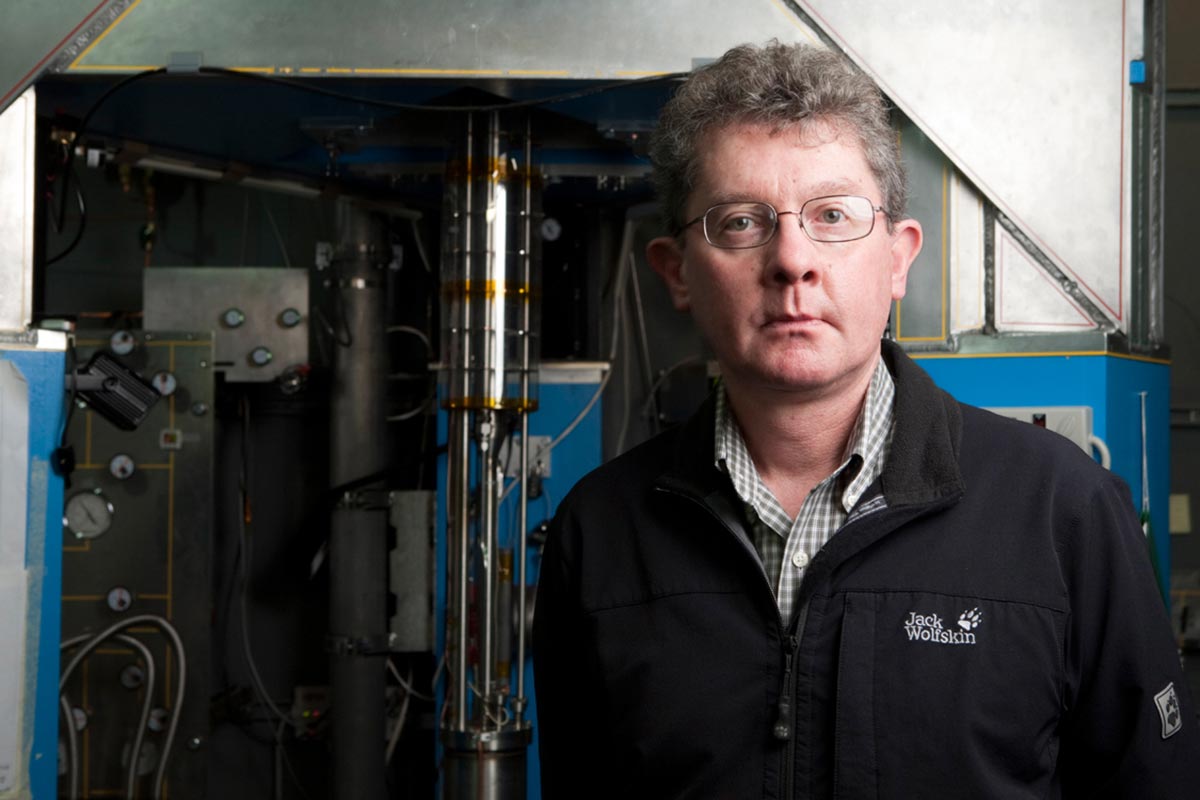Trapping vortices key to high-current superconductors
By Bill Steele
If we are to see the promised benefits of high-temperature superconductors, such as low-loss motors and generators or maglev trains, we will need superconductors that can carry very large currents.
Decades-old experiments have shown that the current density a superconductor can carry may be increased by bombarding the material with high-energy ion beams. But to engineer such materials on a large scale, we need to know what’s actually happening in the lab samples.
The emerging technology of the scanning tunneling microscope (STM) has finally provided a picture at the atomic level that may lead to a theory to guide future engineers. Researchers at Cornell and Brookhaven and Argonne national laboratories have found that irradiation of the material creates nanometer-sized defects that trap swirling eddies in the flow of electrons, keeping them out of the way so more current can flow. They reported their discovery in the May 22 issue of the journal Science Advances.
“No previous experiment has ever imaged the effects of such damage on the atomic scale electronic structure of any material,” said J.C. Séamus Davis, the James Gilbert White Distinguished Professor in the Physical Sciences and director of the Center for Emergent Superconductivity at Brookhaven. “It is an eye-opener that for the first time we can see what happens.”

The STM scans a sample with a probe so sharp that its tip is a single atom, moving across a surface in steps smaller that the diameter of an atom. Measuring current flow between the tip and the surface as the probe is moved up and down gives a topographic map of the surface, while varying the voltage reveals the energy of electrons under the probe, in effect measuring how much positive charge is needed to pull an electron loose. The specially built STM allows scanning at cryonic temperatures and under a high magnetic field such as might be found in motors and other practical devices.
The researchers scanned a sample of a compound of iron, selenium and tellurium that becomes a superconductor at 19 degrees above absolute zero – and in some forms much higher – that had been irradiated by intense beams of gold ions from a particle accelerator – the only way to generate a beam powerful enough to punch through a solid material.
In a magnetic field, moving electrons are pushed off at right angles to their path. Electrons carrying current in a superconductor can be thought of as a fluid, and the magnetic field causes bunches of electrons to turn sideways and create “vortices” – eddies in the river of electrons – that block current-carrying electrons.
As expected, the STM scan found “columnar defects” – holes a few nanometers in diameter punched down through the crystal lattice by the gold projectiles. And in those columns they found the characteristic signature of vortices, the many swirling electrons producing bright spots on the STM images. They also found small defects scattered around the large columns, apparently created by what amounted to flying debris from the ion strike, and these too trapped a few vortices. “As long as the vortices are fixed in a location they can't cause havoc,” Davis said. Understanding the geometry of these defects, the researchers suggest, could lead to engineering new materials with such geometry built in.
The work is supported primarily by the U.S. Department of Energy. Collaborators included researchers at Laboratoire de Physique des Solides, Orsay, France; University of St Andrews, Scotland; Politecnico di Torino, Italy; and Istituto Nazionale di Fisica Nucleare, Sezione di Torino, Italy.
Media Contact
Get Cornell news delivered right to your inbox.
Subscribe